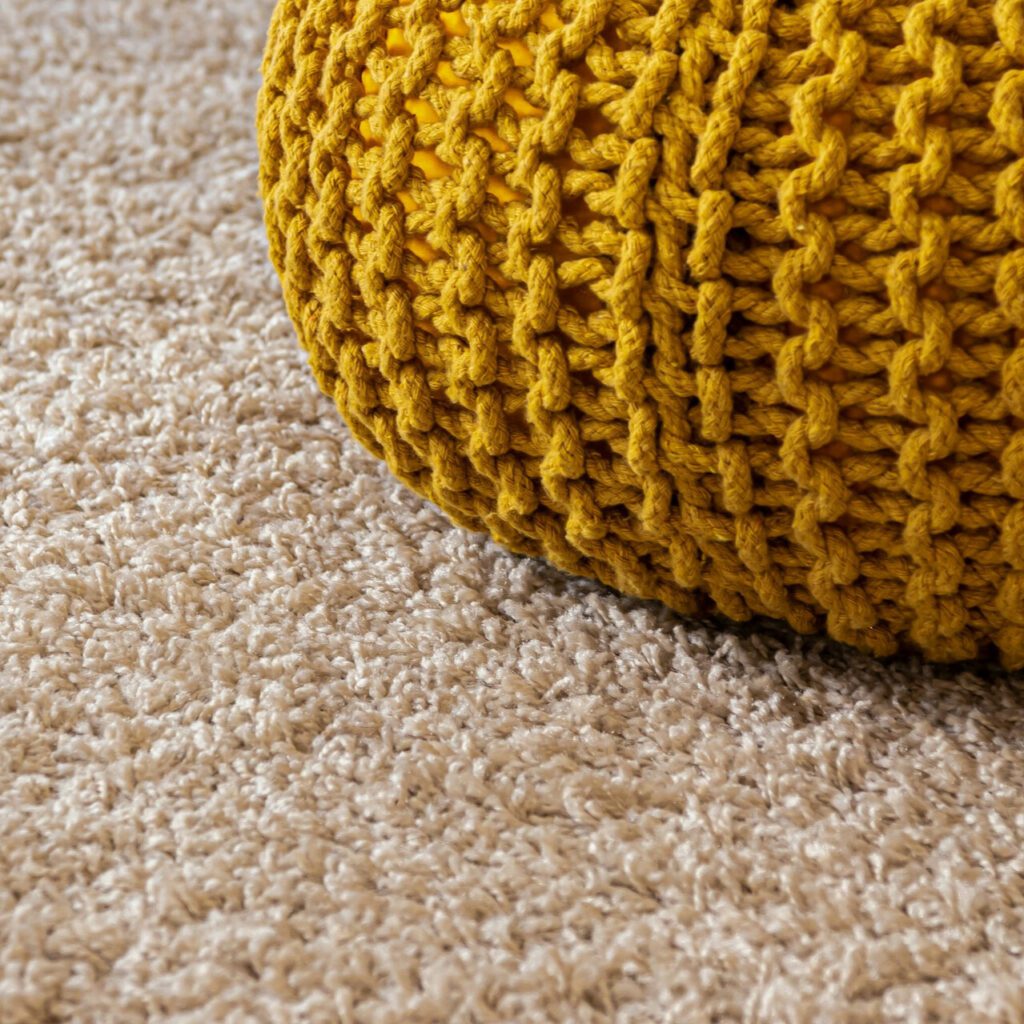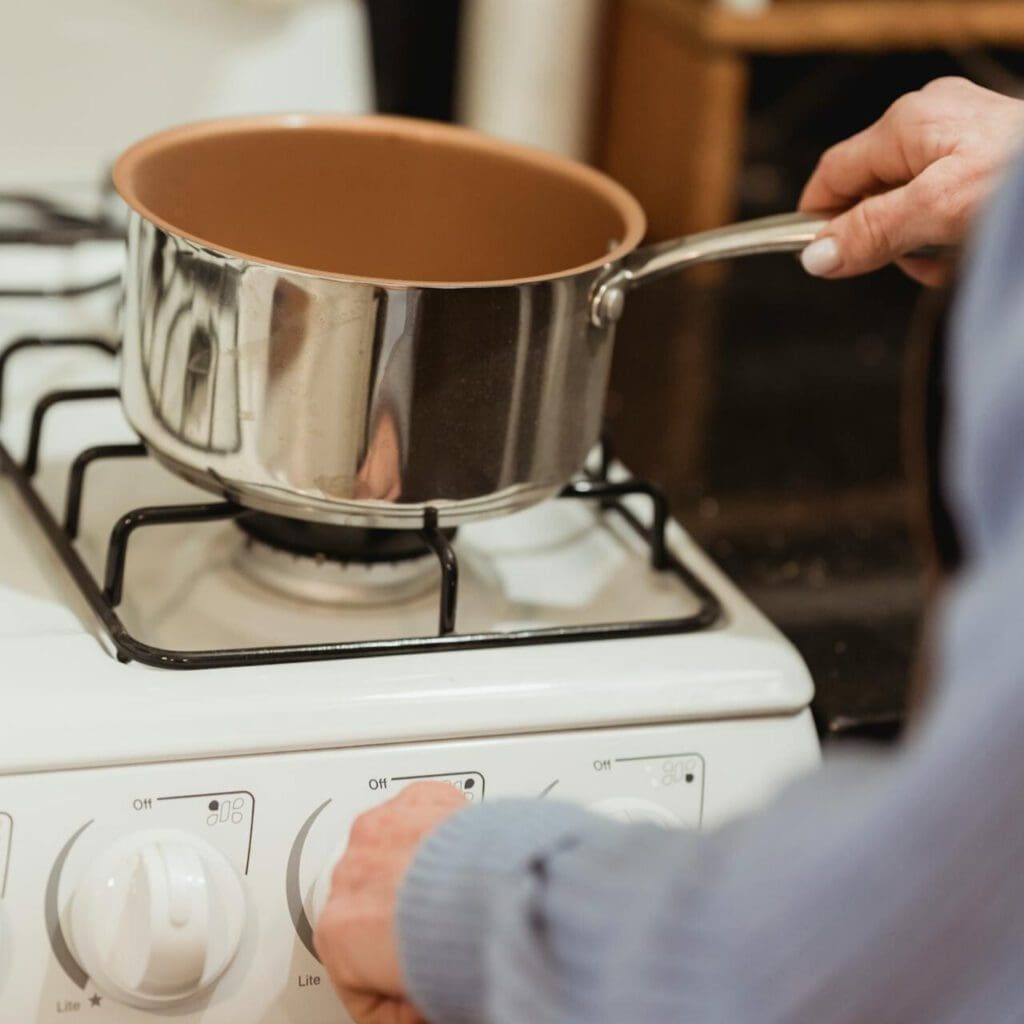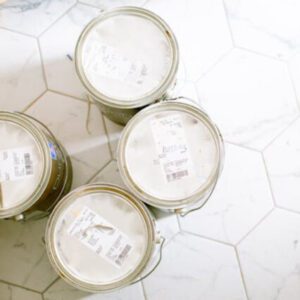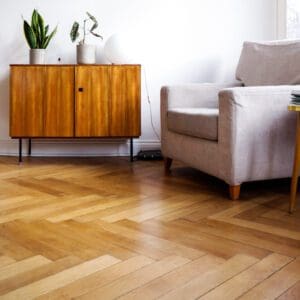In this post: we answer the question “where does indoor air pollution come from”and explore strategies for better indoor air quality through an invisible but important part of interior design.
The Home Green is reader-supported and may receive a commission if you decide to purchase through a posted link. There is no cost to you.
When it comes to creating a healthy home, one of the most important considerations is literally the air you breathe. Not all furniture, home goods, paints, or cleaning products are created equal. The things that you bring inside and the way you maintain your home can impact your air quality. Unfortunately, studies by the EPA have proven that indoor air quality can often be much worse than the air outside.
If you find yourself wondering “where does indoor air pollution come from?” or why indoor air quality matters or what you can do to improve yours, read on.
In this article
Understanding the importance of indoor air quality
Where does indoor air pollution come from: common indoor air pollutants
How to improve indoor air quality through better interior design choices
Choosing low-VOC materials and finishes
Look for product certifications
The benefits of proper ventilation and air circulation
Understanding the importance of indoor air quality
Most of us spend most of our time indoors, whether it's at home, in an office, school, or another enclosed space. Breathing in clean and fresh air is an underappreciated contributor to our overall health and well-being and indoor pollutants can have adverse effects on our health.
In the short term, exposure to indoor air pollutants can cause symptoms like coughing, sneezing, watery eyes, and headaches. In the long term, continuous exposure to poor indoor air quality can lead to chronic respiratory conditions, cardiovascular diseases, and even certain types of cancer. Children, the elderly, and individuals with pre-existing health conditions are especially vulnerable.
In a fascinating study, it was shown that the quality of indoor air can also have a significant impact on how well people perform on tests of cognitive functioning proving how important it is to have good air quality in our offices and schools! (not to mention homes!)
Where does indoor air pollution come from: common indoor air pollutants
For better indoor air quality, it helps to first understand the common pollutants that can be present in our living spaces. The American Lung Association identifies 5 key contributors to indoor air pollution.


Particulates in our air


Radon


Volatile organic compounds


Residential combustion


Allergens
Dust and allergens are among the most common indoor air pollutants. They can trigger allergies and respiratory issues, especially if you're already sensitive to them. Mold spores are also a common issue, especially in areas with high humidity. Breathing in mold spores can cause respiratory infections and exacerbate existing respiratory conditions.
Another significant consideration is Volatile Organic Compounds (VOCs) that can be released by the furniture, finishes, cleaning products, and other goods we bring into our homes. VOCs can be released into the air for an extended period, contributing to poor indoor air quality over the long term. Inhaling high levels of VOCs can lead to headaches, dizziness, and even long-term health problems.
Burning things inside, whether it's in a fireplace or on a stove, can also be a significant contributor to indoor air pollution – one that many of us are just recently becoming more aware of. If you need to use a gas stove, fireplace, or even burn a candle indoors, make sure that your space is well ventilated. Running the hood vent above your stovetop while cooling, for example, is a good way to reduce the impact on your air quality.
Radon is another source of indoor air pollution and one that we often overlook. If you're not sure what your radon exposure is, be sure to test your home to see if you need to take any remediation actions.
How to improve indoor air quality through better interior design choices
Thankfully, many interior design choices can contribute to better indoor air quality and create a healthier living environment. Here are some effective strategies:
Choosing low-VOC materials and finishes for better indoor air quality
Opt for low-VOC materials and finishes, made with fewer harmful chemicals which are less likely to negatively impact your air quality and health. Two big categories where this is particularly important are the brand and type of paint you select, and the furniture and other home goods you choose.
When it comes to paint, many major brands offer low and no-VOC versions. One of our favorites is ECOS paint, which offers interior and exterior paints and stains. They offer a full line of colors and tones and will color match and ship right to your home.
If all else fails, consider using pre-owned items, which have already done much of their off-gassing. You can also look for natural and organic materials, such as wood, stone, and cotton, which have minimal chemical off-gassing.


Look for product certifications


There are so many considerations when shopping for home goods that adding one more thing to the list can be daunting. Luckily there are some shortcuts to finding safer items for your home. Keep an eye out for these key certifications that can help you maintain better indoor air quality:
- The GREENGUARD logo means that a product has been tested to be within a safe level of chemical emissions.
- OEKO-TEX® is specific to textiles and verifies that a product meets specific environmental standards.
- GOTS is the Global Organic Textile Standard and certifies that the materials used are organic.
For more information on these and other certifications, please visit our full article.
The benefits of proper ventilation and air circulation
Good ventilation is crucial for maintaining better indoor air quality. Proper airflow helps remove pollutants and circulate fresh outdoor air throughout your home.
Ensure that your space has adequate ventilation systems, such as windows that can be opened, exhaust fans in kitchens and bathrooms, and air purifiers with HEPA filters. Additionally, promote air circulation by strategically placing fans throughout your space to help distribute the fresh air.
One of the most important times of year to keep this in mind is in the dead of winter and the heat of summer, when we're most likely to have our HVAC systems running 24/7. In these cases, make a point to open your house up, even if it's just for 10 minutes at an optimal time of day, to get some fresh air circulating.


Indoor plants to for better indoor air quality


Indoor plants add a touch of nature to our living spaces and may also contribute to better indoor air quality. Plants naturally absorb carbon dioxide and release oxygen, and certain plants are believed to be particularly effective at removing common indoor air pollutants.
While we're always fans of adding some living things to your space, it's worth noting that for some with particular allergies, plants may be a trigger. Consider your particular circumstances before selecting plants for your home.
To learn more about our favorite indoor plants, check out our full article.
Eliminating sources of indoor air pollution
Identifying and eliminating sources of indoor air pollution can also be a great way to improve indoor air quality. Regularly inspect your home for potential sources of pollution, such as leaky pipes, damp areas, or mold growth. Addressing these issues promptly can prevent further contamination of the air.
It's also important to be mindful of the products you bring into your space. Choose cleaning products, personal care items, and household supplies that are free from harsh chemicals and artificial fragrances. Opt for natural alternatives whenever possible for better indoor air quality in your home.
Regular maintenance and cleaning for better indoor air quality
Maintaining a clean and clutter-free environment is essential for good indoor air quality. Regularly clean your space to remove dust, allergens, and other pollutants that may have settled on surfaces. Vacuum carpets and upholstery, mop hard floors, and dust furniture regularly. Don't forget to clean or replace air filters in your ventilation systems to ensure they are working efficiently. Regular maintenance and cleaning routines will help prevent the buildup of pollutants and promote better indoor air quality.
Conclusion: breathing fresh and living healthfully
We hope this article helped answer the question “Where does indoor air pollution come from?” Improving indoor air quality through interior design choices is crucial for our health and well-being. By understanding the importance of better indoor air quality, identifying common pollutants, and implementing effective strategies, we can create healthier living spaces.
Choosing low-VOC materials, ensuring proper ventilation, purifying your air, eliminating sources of pollution, and maintaining regular cleaning routines are all key steps towards breathing fresh and living healthy.
FAQs
Where does indoor air pollution come from?
Your interior design choices can have a big impact on your home's air quality. Volatile organic compounds from things like furniture, cleaning supplies, and paint can all contribute to poor air quality. Other sources include particulates in the air, allergens like mold spores, radon, and combustion in your home.
Why indoor air quality is important?
Maintaining the health of the people in your home is perhaps the best reason to focus on better indoor air quality. Pollutants in the air can have short and long-term impacts on your health, especially for people with pre-existing conditions like allergies and asthma. Studies have even shown that air quality can impact cognitive function!
Other articles related to improving indoor air quality
Free tips and inspiration in your inbox
Enter your email address below to receive the latest news from The Home Green.




